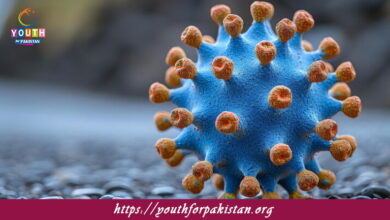Inheritance Of Single Trait MDCAT Quiz with Answers

Inheritance Of Single Trait MDCAT Quiz: The inheritance of a single trait forms the basis of Mendelian genetics, where a single gene with two alleles—one dominant and one recessive—determines the expression of a particular characteristic. This type of inheritance can be studied by making monohybrid crosses, where two individuals that differ in one trait are crossed. MDCAT students must learn about single trait inheritance because it provides the foundation upon which to solve genetic problems and predict the traits of offspring. MDCAT Quiz Single Trait Inheritance This will test your knowledge on genetic terminology, Punnett squares, genotype and phenotype ratios, and application of Mendel’s laws.
Dominant and Recessive Alleles
In the inheritance of a single trait, one allele is usually dominant over the other. A dominant allele will express its characteristic in the phenotype even when only one copy is present—that is, in the heterozygous condition. A recessive allele, on the other hand, will express its characteristic only when two copies are present—that is, in the homozygous condition. For example, in pea plants, the allele for round seeds (R) is dominant over the allele for wrinkled seeds (r). Thus, a plant with the genotype RR or Rr will have round seeds, while only a plant with the genotype rr will have wrinkled seeds. The MDCAT Quiz will test your understanding of dominant and recessive alleles and your ability to predict genotypes and phenotypes in monohybrid crosses.
Punnett Square and Genetic Ratios
Mendel used what is now called the Punnett square to deduce the predicted genotypes and phenotypes of the offspring in a monohybrid cross. In a typical monohybrid cross, the heterozygous individual Rr is crossed with another heterozygous individual Rr, resulting in this genotypic ratio: 1 RR : 2 Rr : 1 rr. The phenotypic ratio will be 3 round-seeded plants : 1 wrinkled-seeded plant because the dominant allele R represents the round seed phenotype. This MDCAT Quiz will test you on using Punnett squares for solving genetic problems and predicting the results of crosses, as well as determining both the genotypic and phenotypic ratios for a single trait.
HOMOZYGOUS AND HETEROZYGOUS GENOTYPES
A homozygous genotype consists of two identical alleles for a given trait (e.g., RR or rr), while the heterozygous genotype contains two different alleles (e.g., Rr). The homozygous dominant genotype, RR, will express the dominant phenotype; similarly, the heterozygous genotype, Rr, will also express the dominant phenotype, while the homozygous recessive genotype, rr, will express the recessive phenotype. Understanding these terms is important in the prediction of genetic outcomes and in analyzing the inheritance patterns of single traits in particular. The MDCAT Quiz will test your ability to differentiate between a homozygous and heterozygous genotype and to determine their effects on phenotypic expression.
Quiz on Inheritance of Single Trait
Taking a single-trait inheritance MDCAT Quiz will enable you to make an assessment of your understanding of genetic principles, including dominant and recessive alleles, Punnett squares, genotype and phenotype ratios, and homozygous versus heterozygous genotypes. The questions in the quiz will challenge you to solve genetic problems and make predictions about offspring characteristics based on Mendel’s laws of inheritance. Besides, drilling with Free Flashcards will consolidate these key concepts, and you will be well-prepared for your MDCAT exam.

The recessive trait can only be expressed when the genotype is _______ for that trait.
Homozygous recessive

If a parent has a genotype of heterozygous, their offspring will inherit _______ alleles.
Two different

The phenotypic ratio for a cross between two heterozygous parents for a single trait is _______.
0.12569444444444

A recessive trait is only observed when the organism has _______ alleles for that trait.
Two recessive

A cross between two heterozygous plants (Tt × Tt) results in a _______ phenotypic ratio.
0.12569444444444

A cross between a homozygous recessive plant (tt) and a heterozygous plant (Tt) will produce offspring with a phenotypic ratio of _______.
0.042361111111111

The F2 generation in a monohybrid cross shows a _______ phenotypic ratio for dominant and recessive traits.
0.12569444444444

A cross between a homozygous dominant plant (TT) and a homozygous recessive plant (tt) will produce _______ offspring.
All heterozygous

The inheritance pattern where one allele does not completely dominate the other is known as _______.
Incomplete dominance

The principle of independent assortment states that alleles for different traits are inherited _______ of one another.
Independently

In a monohybrid cross, two heterozygous plants (Tt × Tt) will produce _______ dominant offspring.
0.75

A trait controlled by a single gene that has two alleles is said to exhibit _______ inheritance.
Simple Mendelian
Experience the real exam environment with our expertly designed collection of over 25,000 MCQs MDCAT Mock Tests.





